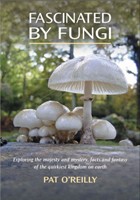Ramaria formosa (Pers.) Quél.
Phylum: Basidiomycota - Class: Agaricomycetes - Order: Gomphales - Family: Gomphaceae
Distribution - Taxonomic History - Etymology - Identification - Culinary Notes - Reference Sources
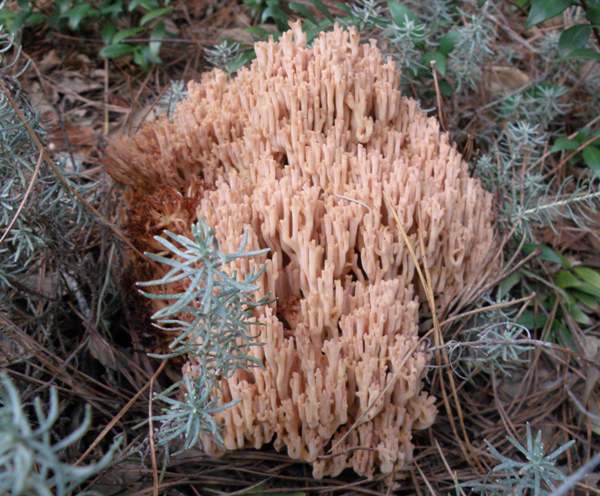
A rare coral fungus of broadleaf woodland, Ramaria formosa is very variable in colour. Some specimens have more of an orange tinge, but perhaps the most attractive is the pink form pictured here. Unfortunately the delicate colouring of young fruitbodies soon fades.
This coral fungus is relatively common in some southern-European oak woodlands, but occasionally it has been reported to form mycorrhizae also with conifers. (The specimen shown here was growing close to an oak tree.)
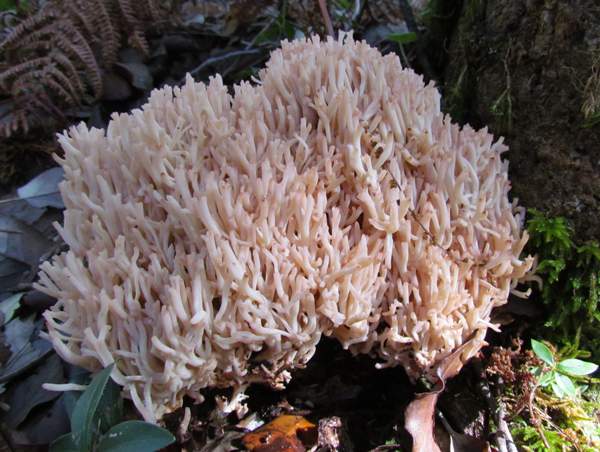
Distribution
Seen only rarely in Britain and Ireland, and most often in southern England, Ramaria formosa occurs also throughout most of mainland Europe, where it is increasingly common towards the Mediterranean and the Iberian Peninsula.
This coral fungus occurs also in woodlands in many parts of North America.
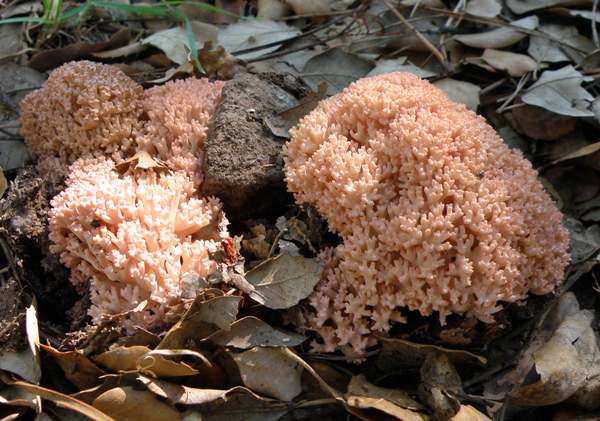
Taxonomic history
This coral fungus was described in 1797 by Christiaan Hendrik Persoon, who gave it the scientific name Clavaria formosa. It was French mycologist Lucien Quélet who, in 1888, redescribed this species under its currently-accepted scientific name Ramaria formosa.
Synonyms of Ramaria formosa include Clavaria formosa Pers.
Etymology
Ramaria, the generic name, comes from Ram- meaning branch, with the suffix -aria meaning posessing or furnished with. Ramaria coral species are indeed furnished with numerous branches.
The specific epithet formosa means shapely (beautifully formed) - quite appropriate for this lovely coral fungus, which if seen early in its development when the colour has not faded is surely one of the most beautiful of all woodland fungi.
Identification guide
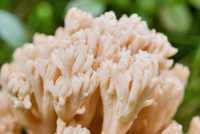 |
FruitbodyWhen fully developed the whole fruitbody is usually 7 to 20cm tall, and up to 15cm across. Pinkish-ochre to orange-pink, paler at the tips of branches, turning ochraceous with age; tough and rubbery coral-like structure with a pale stout base, repeatedly forking; surface smooth, often flattened. Spores are produced on the coral-like surface, which turns dark wine-red or black when bruised. |
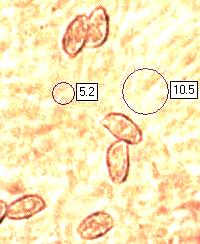 |
SporesOblong-ellipsoidal to subfusiform, 8-15 x 4-6µm, with a rough surface; inamyloid. Spore printOrange-yellow (ochraceous). |
Odour/taste |
Odour not distinctive; taste bitter. |
Habitat & Ecological role |
Mycorrhizal with hardwoods such as oaks; occasionally associated with conifers. |
Season |
July to November in Britain and Ireland. |
Similar species |
Ramaria stricta is white or cream and its branches are more upright. |
Culinary Notes
Ramaria formosa is poisonous; it causes stomach pains and diarrhoea. There is another reasion why this coral fungus should not be collected in Britain: it is very rare. In the Red Data List produced by Shelly Evans et al. in 2006 the Conservation Status of Ramaria formosa is categorised as Vulnerable.
Reference Sources
Fascinated by Fungi, 2nd Edition, Pat O'Reilly 2016, reprinted by Coch-y-bonddu Books in 2022.
Dictionary of the Fungi; Paul M. Kirk, Paul F. Cannon, David W. Minter and J. A. Stalpers; CABI, 2008
Taxonomic history and synonym information on these pages is drawn from many sources but in particular from the British Mycological Society's GB Checklist of Fungi.
Fascinated by Fungi. Back by popular demand, Pat O'Reilly's best-selling 450-page hardback book is available now. The latest second edition was republished with a sparkling new cover design in September 2022 by Coch-y-Bonddu Books. Full details and copies are available from the publisher's online bookshop...
